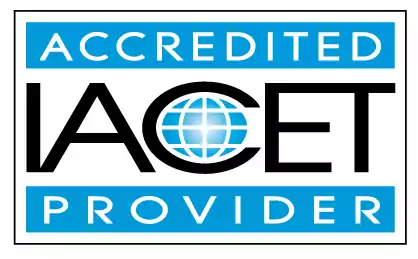Identify strategies to promote joint attention, turn-taking, and social reciprocity for children with autism during play.
Central objective: Identify practical strategies to promote joint attention, turn-taking, and social reciprocity for children with autism during play in early childhood education and child care centers. Supporting elements: evidence-based techniques for child care providers — including structured visual cues, routine-based turn-taking, modeling and reinforcement, sensory-friendly adaptations, and individualized prompts — plus guidance on adapting activities and collaborating with therapists for children with special needs. Actionable tips and training resources help providers create inclusive, socially engaging play environments.Trainings incorporating this outcome
CDA Subject Areas
Proficiency Level
Target Audience
Price
States
Alabama (1) Alaska (1) Alberta (1) Arizona (1) Australia (1) British Columbia (1) California (1) Colorado (1) Connecticut (1) Delaware (1) District of Columbia (1) Florida (1) Georgia (1) Hawaii (1) Idaho (1) Indiana (1) Iowa (1) Jamaica (1) Kansas (1) Louisiana (1) Maine (1) Manitoba (1) Maryland (1) Massachusetts (1) Mississippi (1) Montana (1) Nebraska (1) New Hampshire (1) New Mexico (1) Newfoundland and Labrador (1) Ohio (1) Oklahoma (1) Ontario (1) Oregon (1) Puerto Rico (1) Rhode Island (1) Saskatchewan (1) South Dakota (1) Texas (1) Thailand (1) United Kingdom (1) Utah (1) Vermont (1) Virgin Islands (1) Virginia (1) Washington (1) West Virginia (1)
6 hours courses
Related Outcomes
- Identify strategies for the child care provider that will promote successful child development. Identify strategies for working with children with special needs
- Identify common interaction strategies to help promote a positive classroom environment for young children.
- Identify and demonstrate positive guidance techniques that promote social competency and pro-social behavior.
- Identify strategies to promote play in the early childhood learning environment
- Identify communication strategies for engaging nonverbal and minimally verbal children with autism.
- Identify appropriate practices for identify and demonstrate an children: Identify examples of appropriate activities for different ages
- Identify strategies to promote play in the early childhood learning environment.
- Identify appropriate practices for identify and demonstrate an children: Identify importance of individual planning
- Identify strategies that promote health and wellness for school-aged children.
- Participants will be able to identify resources to help children discover, learn, and experience in a natural play environment.
- Identify strategies that promote health and wellness
- Identify strategies for the child care provider that will promote successful child development
- List and review recommended feeding schedules and identifies strategies for introducing new food for children birth through age three
- Identify different types of play in children ages 2 to 5.
- Identify strategies to promote cultural diversity and acceptance in the child care environment
- Identify strategies for working with children with special needs
- Identify appropriate practices for identify and demonstrate an children: components of a lesson plan
- Define and identify common signs and behaviors of children and youth with Autism Spectrum Disorder.
- Define self-esteem and identify issues and strategies for support of school age children.
- Identify strategies to promote cultural diversity and acceptance in the child care environment.
Related Articles
- Lesson Planning for Infants and Toddlers
- Active Supervision: The Only Way to Care for Children
- Child care education
- Managing Behaviors in the Early Childhood Education Classroom
- Preparing Your Child for a New School Year: Social Skills and Independence
- Early Childhood Education Socialization: Building Social Skills for Life
- Guidelines for Establishing a Consistent Sleep Routine to Ensure Kids are Well-Rested and Ready for School
- Teaching Kids to Become Emotional Heroes through Body Awareness
- Incorporating Technology in Childcare: Balancing Screen Time and Hands-On Activities
- Fostering Positive Social Skills in Children: Tips for Childcare Providers
- How Screens Turn Your Child’s Brain into a Battleground of Bliss and Boredom
- 🧩 Early Signs of Autism in Toddlers — What to Watch For 👀
- 🧩 What Does ABA Look Like in the Classroom? 🎓 What Teachers Should Know
- 🧩 How Do I Support a Student with Autism While Managing Classroom Behavior and Learning? 💕
- 🌙 Is Too Much Screen Time Keeping Kids Awake and Affecting Their Behavior? 😴
- ❤️ How Do Educators Help Families Access the Services They Need?
- 🧩 How Can You Make Your Classroom More Inclusive for Children with Autism?
- 🪁How Can Play Become a Powerful Tool for Supporting Children with Autism?🧩
- 💛🧩 How Can I Make My Teaching More Inclusive for Children with Autism?
 0.6 CEUs
0.6 CEUs